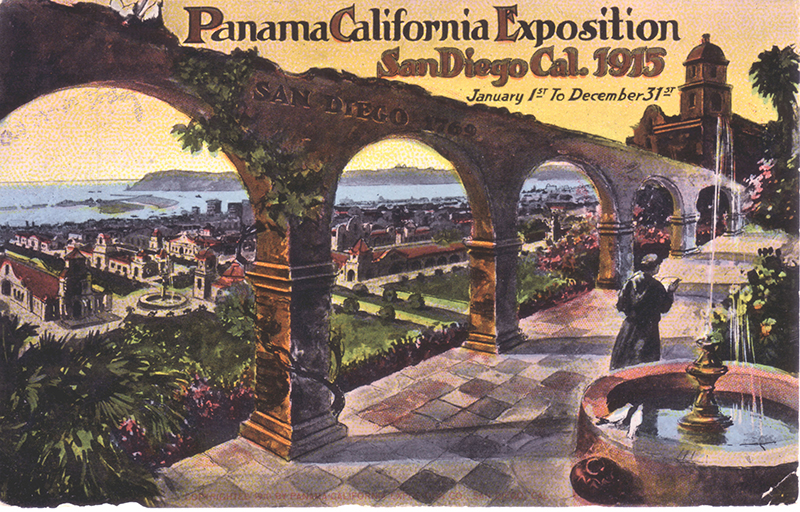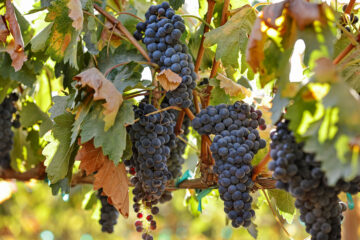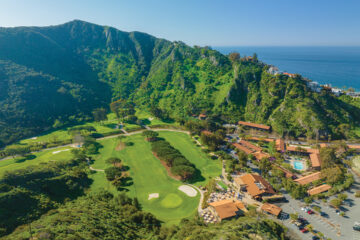Balboa Park: 1915 Panama-California Exposition

The Administration Building was the first building completed for the 1915 Panama-California Exposition in Balboa Park, and is the first structure encountered when entering the park via Cabrillo Bridge. Compared to the Spanish-Colonial style of most of the buildings erected for the fair, it possesses an architectural simplicity. Frequently credited to architect Irving Gill, there is nonetheless some question as to the building’s designer. Architect Sam Hamill, who for many years played an important role in preserving the park’s architectural heritage, voiced doubts about Gill’s involvement. Adding to the confusion, the names of Carleton Monroe Winslow and Bertram Goodhue appear on the existing blueprints.

The building first served as headquarters for the fair, but following the exposition, other uses were found for it. For a time, the city used it as a water-testing laboratory and it also served as offices for both the San Diego Bureau of Mines and recreation projects associated with the Works Progress Administration. While visually low-keyed, it remains an important structure, not only because it was the first building constructed for the fair, but because it again served as headquarters for the 1935-36 Exposition. Leaving the Administration Building, visitors pass through an arch where they encounter the ornately handsome California Building with its magnificent California Tower. The iconic tower is 200 feet tall and provides a point of reference visible from many areas of the city.

A marvelous example of Renaissance Spanish architecture, the California Building housed the fair’s main exhibition, The Story of Man through the Ages, and was built with the help of the state, which provided $500,000 for construction and displays. The building and tower were later immortalized by Orson Welles in the movie Citizen Kane, when they were used as the exterior of the newspaper tycoon, a grand estate suggested by William Randolph Hearst’s real-life castle in San Simeon. The California Building sits within the California Quadrangle at the north end of the Plaza de California. At the south end is a simpler and much smaller mission-style structure erected by the city and initially named the Fine Arts Building. It is one of only four buildings to be preserved, most of the structures for the fair being temporary. Also at the south end is a diminutive chapel. Widely known as St. Francis Chapel, this site was reportedly dedicated to Father Junipero Serra. Following the close of the great 1915 exposition, the California Building became the San Diego Museum, an institution charged with caring for and continuing the work of the initial exhibits. In 1926, the State of California transferred ownership to the City of San Diego and, 16 years later in 1942, the San Diego Museum became known by its present name, the Museum of Man. DARLENE G. DAVIES

Imagery Courtesy of Darlene G. Davies
Directory
The Great Panama-California Exposition
Spreckels Outdoor Organ Pavilion
Gardens of the Panama-California Exposition
Legacy of the Foreign Arts Building
Panama-California Sculpture Court
Commerce and Industries Building





Comments